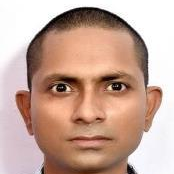International Journal of Image, Graphics and Signal Processing (IJIGSP)
IJIGSP Vol. 12, No. 1, 8 Feb. 2020
Cover page and Table of Contents: PDF (size: 898KB)
Segment-wise Quality Evaluation for Identification of Face Spoofing
Full Text (PDF, 898KB), PP.30-37
Views: 0 Downloads: 0
Author(s)
Index Terms
Image Quality Measures, Segmentation, face-antispoofing
Abstract
Non-intrusive nature of the face-based recognition technology makes it more popular among hand held devices. Spoof detection in face-based recognition systems has been an important topic of the research in the last decade. Among several techniques available in the literature for liveness detection, image quality measure (IQM) based technique are particularly attractive due to their computational efficiency. In this paper, an approach based on segment-wise computation of image quality measures is proposed to improve the accuracy of detection. Two types of the non-overlapping segments are considered here: 1) rectangular segments of identical sizes, 2) segment based on neighborhood variance. It is found that both approaches exhibit better performance in comparison with other techniques without increasing too much computational complexity. The experiments are carried out with well-known Replay-Attack database to prove its robustness under different conditions.
Cite This Paper
Akhilesh Kumar Pandey, Rajoo Pandey, " Segment-wise Quality Evaluation for Identification of Face Spoofing", International Journal of Image, Graphics and Signal Processing(IJIGSP), Vol.12, No.1, pp. 30-37, 2020. DOI: 10.5815/ijigsp.2020.01.04
Reference
[1]H. A. Shabeer and P. Suganthi, "Mobile phones security using biometrics," in Conference on Computational Intelligence and Multimedia Applications, 2007. International Conference on, 2007.
[2]B. Schneier, "Biometrics: uses and abuses," Communications of the ACM, vol. 42, p. 58, 1999.
[3]N. Leavitt, "Mobile phones: the next frontier for hackers?," Computer, vol. 38, pp. 20-23, 2005.
[4]A. K. Jain, K. Nandakumar and A. Nagar, "Biometric template security," EURASIP Journal on Advances in Signal Processing, vol. 2008, p. 113, 2008.
[5]K. Singh, S. Sharma and R. K. Garg, "Visualization of latent fingerprints using silica gel G: a new technique," Egyptian Journal of Forensic Sciences, vol. 3, pp. 20-25, 2013.
[6]E. Marasco and A. Ross, "A survey on antispoofing schemes for fingerprint recognition systems," ACM Computing Surveys (CSUR), vol. 47, p. 28, 2015.
[7]J. Galbally, S. Marcel and J. Fierrez, "Biometric antispoofing methods: A survey in face recognition," IEEE Access, vol. 2, pp. 1530-1552, 2014.
[8]G. Pan, L. Sun, Z. Wu and S. Lao, "Eyeblink-based anti-spoofing in face recognition from a generic webcamera," in {Computer Vision, 2007. ICCV 2007. IEEE 11th International Conference on}, 2007.
[9]S. Bharadwaj, T. Dhamecha, M. Vatsa and R. Singh, "Computationally efficient face spoofing detection with motion magnification," in {Proceedings of the IEEE Conference on Computer Vision and Pattern Recognition Workshops}, 2013.
[10]I. Chingovska, A. Anjos and S. Marcel, "On the Effectiveness of Local Binary Patterns in Face Anti-spoofing," 2012.
[11]J. Galbally and S. Marcel, "Face Anti-spoofing Based on General Image Quality Assessment.," in ICPR, 2014.
[12]A. K. Pandey and R. Pandey, "Application of Spectral Information in Identification of Real-Fake Face Images," in Proceedings of the Sixth International Conference on Computer and Communication Technology 2015, 2015.
[13]G. Pan, L. Sun and Z. Wu, Liveness detection for face recognition, INTECH Open Access Publisher, 2008.
[14]Z. Wang, A. C. Bovik, H. R. Sheikh and E. P. Simoncelli, "Image quality assessment: from error visibility to structural similarity," IEEE transactions on image processing, vol. 13, pp. 600-612, 2004.
[15]J. Galbally, C. McCool, J. Fierrez, S. Marcel and J. Ortega-Garcia, "On the vulnerability of face verification systems to hill-climbing attacks," Pattern Recognition, vol. 43, pp. 1027-1038, 2010.
[16]T. de Freitas Pereira, A. Anjos, D. a. M. J. Martino and S. Marcel, "LBP- TOP based countermeasure against face spoofing attacks," in {Computer Vision-ACCV 2012 Workshops}, 2012.
[17]I. Chingovska, J. Yang, Z. Lei, D. Yi, S. Z. Li, O. Kahm, C. Glaser, N. Damer, A. Kuijper, A. Nouak and others, "The 2nd competition on counter measures to 2D face spoofing attacks," in {Biometrics (ICB), 2013 International Conference on}, 2013.
[18]J. Galbally, S. Marcel and J. Fierrez, "Image quality assessment for fake biometric detection: Application to iris, fingerprint, and face recognition," IEEE transactions on image processing, vol. 23, pp. 710-724, 2014.
[19]J. Määttä, A. Hadid and M. Pietikäinen, "Face spoofing detection from single images using micro-texture analysis," in Biometrics (IJCB), 2011 international joint conference on, 2011.
[20]R. D. Albu, "Face anti-spoofing based on Radon transform," in Engineering of Modern Electric Systems (EMES), 2015 13th International Conference on, 2015.
[21]N. Ben-Asher, N. Kirschnick, H. Sieger, J. Meyer, A. Ben-Oved and S. Möller, "On the need for different security methods on mobile phones," in Proceedings of the 13th International Conference on Human Computer Interaction with Mobile Devices and Services, 2011.
[22]K. Cao and A. K. Jain, "Hacking mobile phones using 2D printed fingerprints," Technical Report., 2016.
[23]A. D. Meadows and E. Y. Du, "Spoof and vulnerability of biometric systems," Biometrics: From Fiction to Practice, p. 187, 2013.
[24]D. J. Ohana, L. Phillips and L. Chen, "Preventing cell phone intrusion and theft using biometrics," in Security and Privacy Workshops (SPW), 2013 IEEE, 2013.
[25]T. Edmunds and A. Caplier, "Edmunds, Taiamiti, and Alice Caplier. "Motion-based countermeasure against photo and video spoofing attacks in face recognition," Journal of Visual Communication and Image Representation, no. 50, pp. 314-332, 2018.

